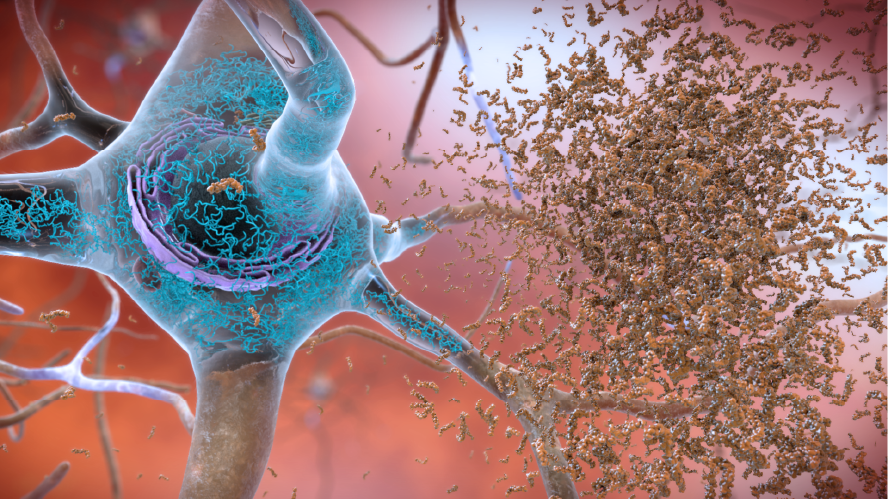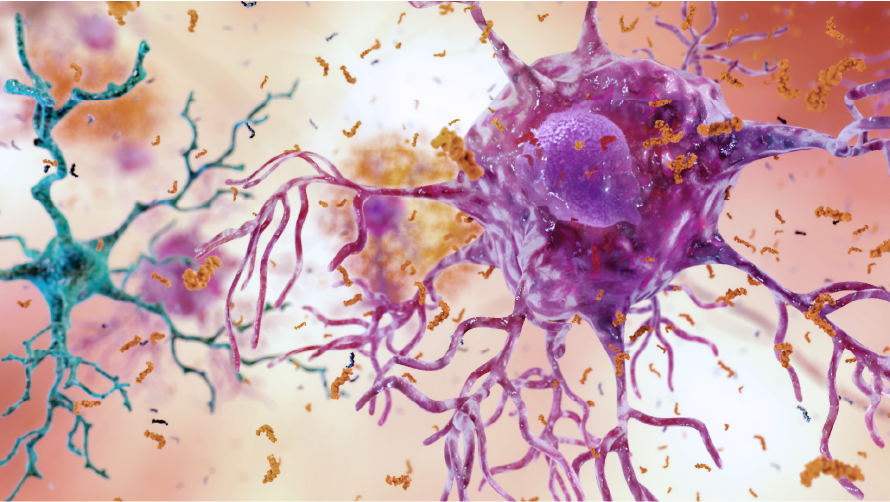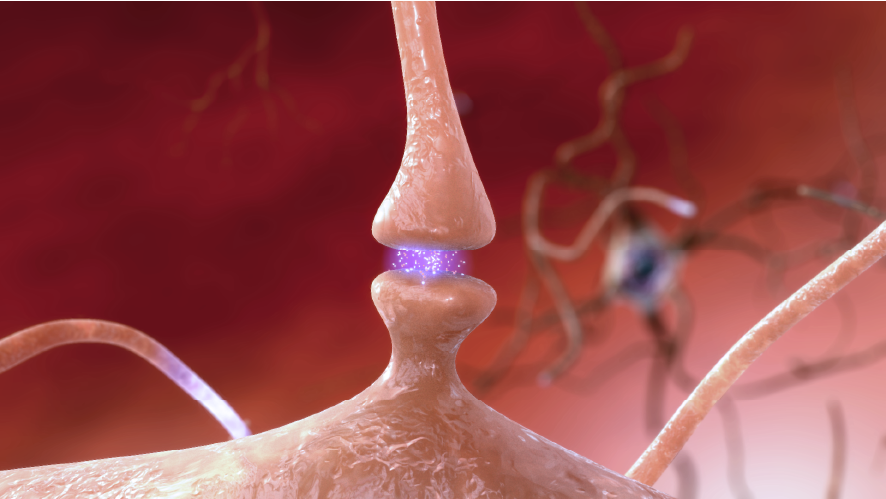They send messages between the different parts of the brain, and from the brain to the muscles and organs of the human body. Many molecular and cellular changes and disruptions occur in the brain of a person with Alzheimer’s disease, and research suggests that the pathology causing these disruptions begin to develop 20 years before the first symptoms appear. These changes can be observed in brain tissue under the microscope upon autopsy.

The amyloid plaques involved in Alzheimer’s come in several different molecular forms that collect between neurons and are formed from the breakdown of a larger protein, amyloid precursor protein. In the Alzheimer’s brain, abnormal levels of this naturally occurring protein clump together to form plaques that collect between neurons that disrupt cell function.
Reprinted in part from information provided on the website of the National Institute of Aging / National Institutes of Health. https://www.nia.nih.gov/health/what-alzheimers-disease

Neurofibrillary tangles are abnormal accumulations of the protein tau that collects inside neurons. Healthy neurons, in part, are supported internally by structures called microtubules. In healthy neurons, tau normally binds to and stabilizes microtubules. In Alzheimer’s disease, however, abnormal chemical changes cause tau to detach from microtubules and stick to other tau molecules, forming threads that eventually join to form tangles inside neurons. These tangles block the neuron’s transport system, harming the synaptic communication between neurons.
Emerging evidence suggests that Alzheimer’s-related brain changes may result from a complex interplay among abnormal tau and amyloid plaque proteins and several other factors. It appears that abnormal tau accumulates in specific brain regions involved in memory. Amyloid clumps into plaques between neurons. As the level of amyloid plaques reaches a tipping point, there is a rapid spread of tau throughout the brain.
Reprinted in part from information provided on the website of the National Institute of Aging / National Institutes of Health. https://www.nia.nih.gov/health/what-alzheimers-disease

Research suggests that chronic inflammation may be caused by the buildup of glial cells normally meant to help keep the brain free of debris. One type of glial cell, microglia, engulfs and destroys waste and toxins in a healthy brain. In Alzheimer’s, microglia fail to clear away waste, debris, and protein collections, including amyloid plaques.
Reprinted in part from information provided on the website of the National Institute of Aging / National Institutes of Health. https://www.nia.nih.gov/health/what-alzheimers-disease

In Alzheimer’s disease, as neurons are injured and die throughout the brain, connections between networks of neurons may break down, and many brain regions begin to shrink. By the final stages of Alzheimer’s, this process—called brain atrophy—is widespread, causing significant loss of brain volume.
Reprinted in part from information provided on the website of the National Institute of Aging / National Institutes of Health. https://www.nia.nih.gov/health/what-alzheimers-disease
© 2005 - 2025 Cure Alzheimer's Fund. All rights reserved.
Cure Alzheimer’s Fund is a “doing business as” name for the Alzheimer’s Disease Research Foundation, a 501(c)(3) public charity with federal tax ID #52-239-6428.

